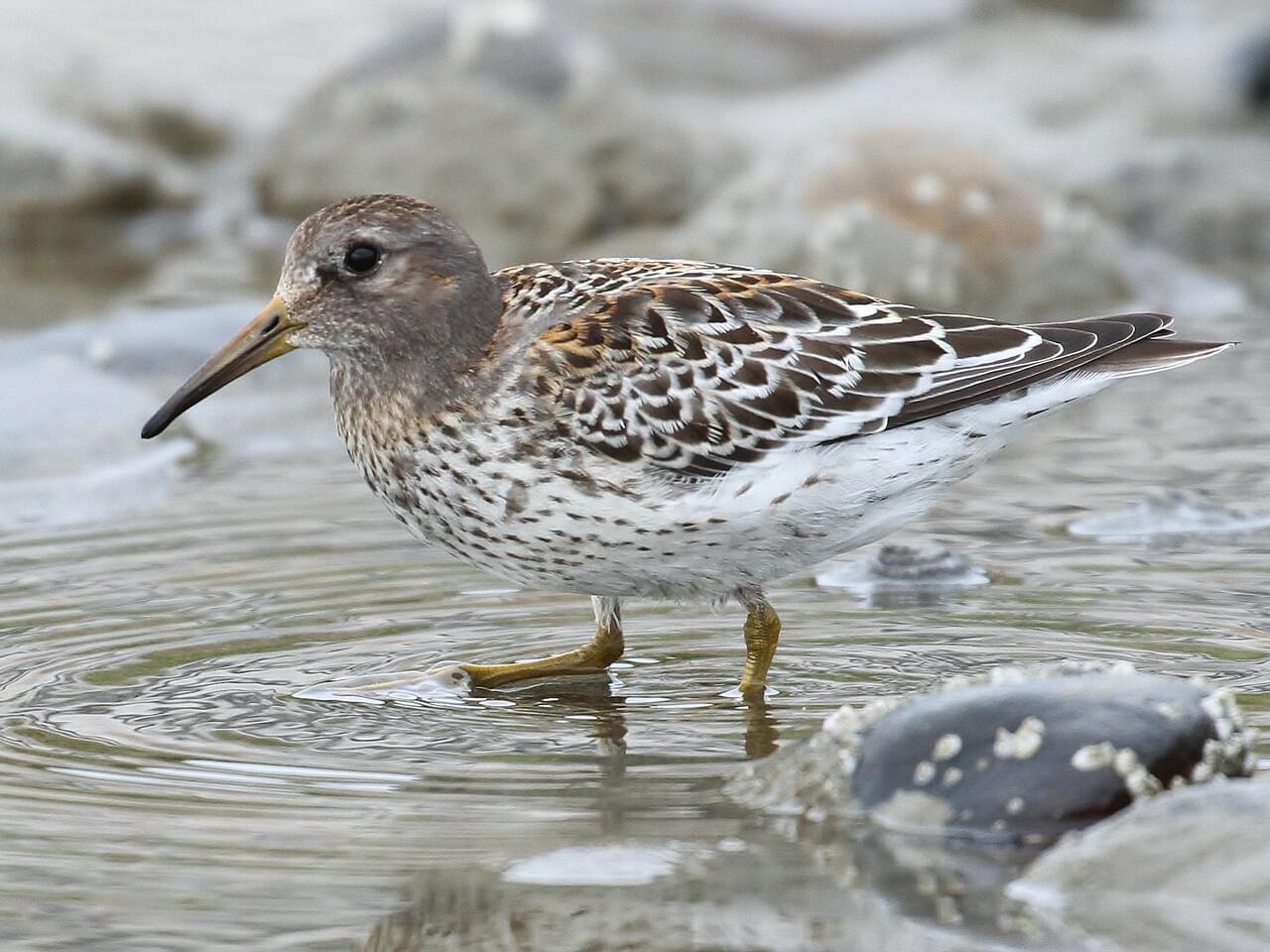In the two+ decades since our beached bird surveys began, COASSTers have reported more than 200 different species – some of which we have recorded tens-of-thousands of times! (Hello Common Murre!)
You can check out our blog post on rarities to learn all about why we find some birds more often than others, and why we keep adding new species to our records. But in this post we wanted to share an exciting milestone: COASSTers have identified our 200th species!
Introducing… the Rock Sandpiper (Calidris ptilocnemis).

Rock Sandpipers (or ROSA) are year-round Alaskan residents, breeding from the Aleutians to the northern Chukchi Sea, and spending winters from the Aleutian chain south through Canada and even the Lower 48. (Although they aren’t common enough to be found in our West Coast guide.)
Like many sandpipers, they forage as they walk along shorelines, probing deep into the sand with their long bills for invertebrate prey.
When Rock Sandpipers are found in flocks on the shoreline you might hear them as soon as you see them! You can listen to the chattering calls of the Rock Sandpiper at this link.
Although we haven’t documented this bird before, it was not unexpected in our dataset. In fact, the Rock Sandpiper has its own species page in the Alaska Guide! Our beached bird guide allowed surveyors to identify this species in just a few steps. Let’s walk through the foot key just as they must have:
- Q1 front toes are free
- Q9 3 front, 1 back (minute)
- Q10 no toes are fused
- Q11 tarsus < 150mm (more like 26 mm!)
- Q12 no claws
- Q13 toe pads aren’t ‘fleshy’. STOP Shorebirds: 4-toed
On SB1 there are just two possible species of 4-toed Shorebirds: Rock Sandpiper and the rare Dunlin. SB8 shows the most likely option – the Rock Sandpiper!
Other Identifying Features:
- The white ‘fringe’ along the mantle is visible in our first photo.
- Predation at the breast makes it difficult to use that body part for identification, but absence of a dark smudge would match the yellow-to-olive feet described on SB9 – making this a non-breeding bird.
- The cinnamon-colored feathers across the mantle make data verifier Charlie think that this is likely a juvenile!
To all of the COASST survey teams that helped us reach this impressive milestone – thank you! Here’s to the next 200 birds!
